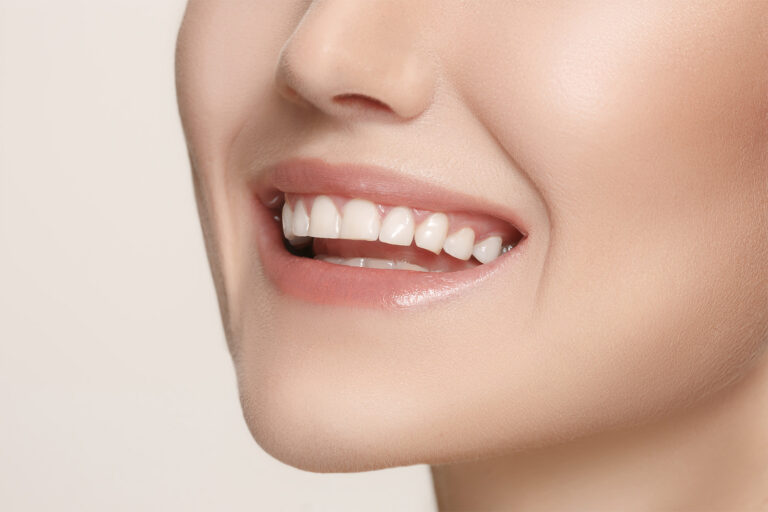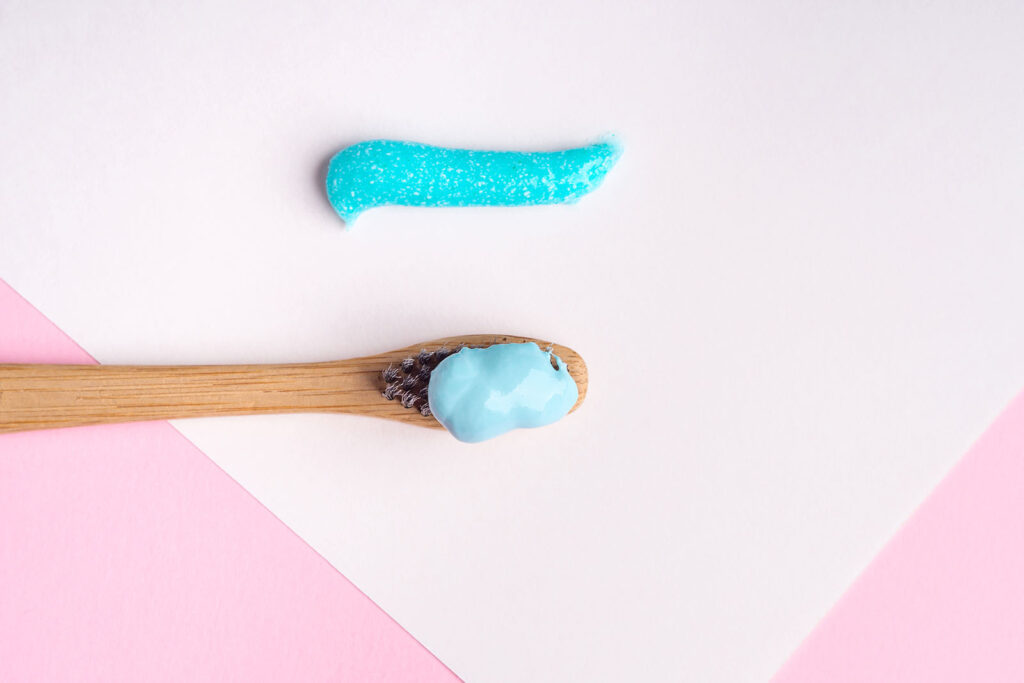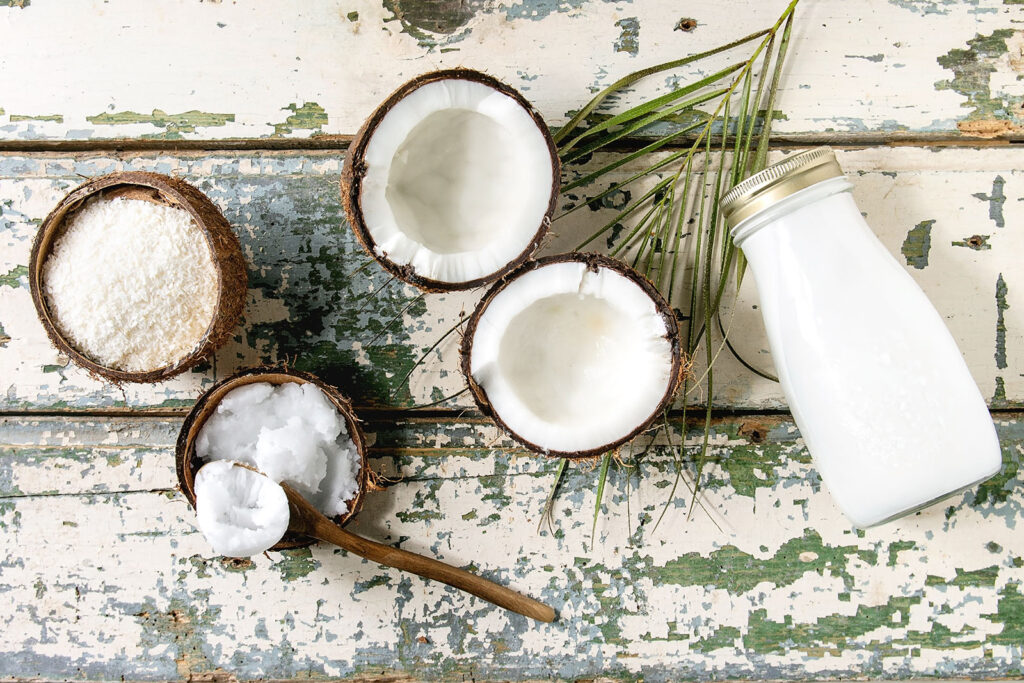In This Article

Your mouth microbiome (also known as "oral microbiome") is complex. Second only to your gut, your mouth has the most diverse set of microorganisms---including bacteria, fungi, viruses and protozoa.
Your mouth is where digestion begins; not only the mechanical chewing and swallowing of your food, but the process of breaking down food and absorbing its nutrients.
Your mouth microbiome is intrinsically connected to your health---both the elevation of your health or the regression towards disease.
Here at Dr. Ginger's, we nerd out about this stuff. Seriously! Which is what drove us to craft an oral care line with your oral microbiome in mind. But here are some general tips to better your mouth microbiome.
The 7 Tips to Better Your Mouth Microbiome.
According to Dr. Ginger Price (and many other dentists out there) here are some of the best tips to improve the health of your mouth.
Tip 1: Sparingly Consume Refined Sugar

Sugar sure seems to be everywhere. This sweet substance has various names, too: high fructose corn syrup, glucose, sucrose, and dozens of others.
It's probably of little surprise that sugar tops the list. It's been highlighted as a major contributor to several health problems, including major problems like heart disease.
How Does Sugar Relate to the Mouth Microbiome?
When it comes to the mouth microbiome, sugars, and the several types of bacteria that love to digest sugars, are a leading cause of cavities (aka dental caries). This is because pH lowering acids are secreted as a bi-product of the bacteria eating and digesting sugar.
This acid wears away your tooth's minerals and enamel layering, allowing for the soft and sensitive dentin to be exposed---which if you've ever had sensitive teeth, you know this feeling is rather...painful.
Your enamel is one (important) thing, but we want to back up a little bit here and talk about the pH level that was just mentioned---because this is key to a healthy oral microbiome.
Your mouth keeps a normal pH range of 6.2 - 7.6 and that just so happens to be the right climate for bacteria (both good and bad) to proliferate. However, at lower ranges, around 5.5 pH and below, the acidic climate of the mouth throws off the balance of bacteria, and tooth decay begins.
"Bad" bacteria loves the 5.5 and lower pH range.
Tip 2: Eat Whole, Nutritional Foods

This second tip has seen a strong correlation to "microbiome" in terms of increased research in the last few decades. Whole, nutritional foods refer to foods that have not been processed, or minimally processed.
These include (organic) whole grains, nuts, fruits, vegetables, lean meats, fish, yogurts (non sugary), and seeds, among other foods. Basically, anything that grows naturally and that can be found in its basic state in the produce and meat sections of the grocery store, or at your local farmers market and butcher.
How Do Whole Foods Relate to the Mouth Microbiome?
Well, it's no secret that a healthy diet improves health. This knowledge is age-old and widely held to be true. When it comes to the microbiome, the story is the same, but on a smaller scale.
The human body requires nutrients (proteins, vitamins, and minerals) to function properly, this is no different for the bacteria, viruses, and protozoa in your microbiome; considering they ARE what is consuming the proteins, vitamins, and minerals to make your body function properly. Crazy, right?
Tip 3: Avoid Smoking Cigarettes & Drinking Alcohol

Again, another non-groundbreaking piece of information that has been apparent to the public for ages now. Smoking cigarettes and drinking alcohol have been related to so many health problems that finding and linking them in this article would be near pointless. So we'll get right to the microbiome.
How Do Cigarettes and Alcohol Relate to the Mouth Microbiome?
Cigarettes are known to decrease saliva, and thicken saliva. Saliva is crucial for your pH balance in your mouth---too little saliva is likely to be correlated to an acidic mouth environment (and as we pointed out above, tooth decay). Not to mention bad breath, yuck.
Alcohol also decreases saliva and can lead to tooth decay. Again, the lowering of your mouth pH allows for the explosion of "bad bacteria" that secrete acids onto your teeth and gums.
Both alcohol and cigarettes also stain teeth, causing a yellowish discoloration.
Tip 4: Moderate Acidic Food & Drinks (Practice Balance)

Not to beat the horse here, but if you've read the above items then you've come to understand that an acidic pH level in the mouth means tooth decay, which means pain, which means no fun. If you're concerned about your oral environment and tooth decay, then limiting food and drinks that are acidic might be of benefit to your mouth.
Some commonly consumed acidic foods/drinks are: coffee, soda, citrus, berries, tomatoes, vinegar, chocolate, and nuts. Now, you might think this contradicts tip 2 (eat whole foods), which it does, but only if over-consumed. They key, like many things in life, is moderation.
How Do Acidic Foods Relate to the Mouth Microbiome?
In interest of saving our precious typing fingers, we will link to an NIH article about mouth pH levels.
Too much acidity in the mouth = imbalance of bacteria, fungi, and protozoa.
Tip 5: Avoid Chemical-Laden Oral Care Products

This is a rapidly rising topic of concern for consumers these days; from the food we eat to what we clean our mouths with: "What's in it? Should I have that in my body?"
Here are some common ingredients found in big brand conventional oral care products in the American marketplace and why they are there:
- Cetylpyridinium Chloride as an antiseptic.
- Domiphen Bromide as an antiseptic.
- Denatured Alcohol as an antiseptic.
- Stannous Fluoride as a tooth enamel strengthener.
- Methylparaben for shelf life.
- Blue Dye #1 for market appeal.
- Red Dyes and Yellow Dyes for market appeal.
How Do Antiseptic and Coloring Chemicals Relate to the Mouth Microbiome?
More or less, every single one of these above chemicals/additives disrupts the chemical signaling, structure, and health of the various bacteria of your mouth microbiome.
Tip 6: Practice Oil Pulling

Coconut oil pulling is the practice of swishing a teaspoon to tablespoon amount of coconut oil in your mouth for anywhere from 10-20 minutes. This several thousand year-old practice has roots in Ayurvedic medicine, and has promising health benefits.
The National institute of Health has concluded in their studies (and reviews) that this procedure does promote a healthier oral environment due to its significant reduction of oral plaque and gingivitis.
How Does Oil Pulling Relate to the Mouth Microbiome?
Significantly reducing plaque and the bacteria that causes gingivitis is an astounding benefit of coconut oil, and directly impacts to the bacterial count in your oral cavity. It lowers the "bad" bacteria and creates an environment that promotes healthy bacteria. Win-win.
But don't run out and buy coconut oil just yet, it can be difficult to palate for 20 minutes and can be a real dent in your morning routine. We suggest our own Coconut Oil Mouthwash to get the same benefits in 2 minutes, with a delicious flavor that you'll find hard to put down.
Tip 7: Practice A Good Oral Care Routine

Dr. Ginger Price (owner of Dr. Ginger's) suggests the #flossbrushswish method for maintaining a healthy mouth microbiome.
First, floss. This action removes plaque and food debris from in between the teeth.
Second, brush. This action removes plaque and food debris from on the teeth.
Third, swish. This action cleans up any remaining plaque and debris that was knocked loose by the first two actions.
How Does a Good Oral Care Routine Relate to the Mouth Microbiome?
Simple: it cleans away plaque, which is made up of various lactobacilli bacteria, which are the leading bacteria observed in acidic-based tooth decay.
BONUS Tip!

Try Dr. Ginger's Coconut Oil Mouthwash, Coconut Oil Toothpaste, and Coconut Oil covered Floss for a perfect routine to improve your mouth microbiome.
Of course, you can try all three in a the Floss, Brush, Swish Bundle at a discount.